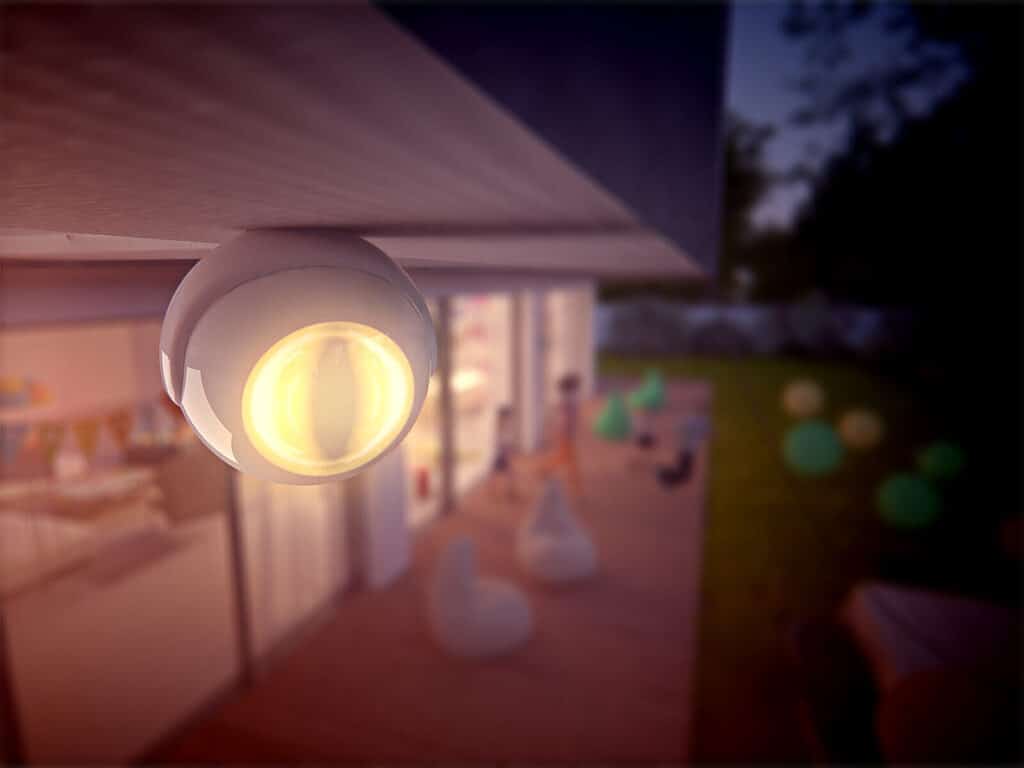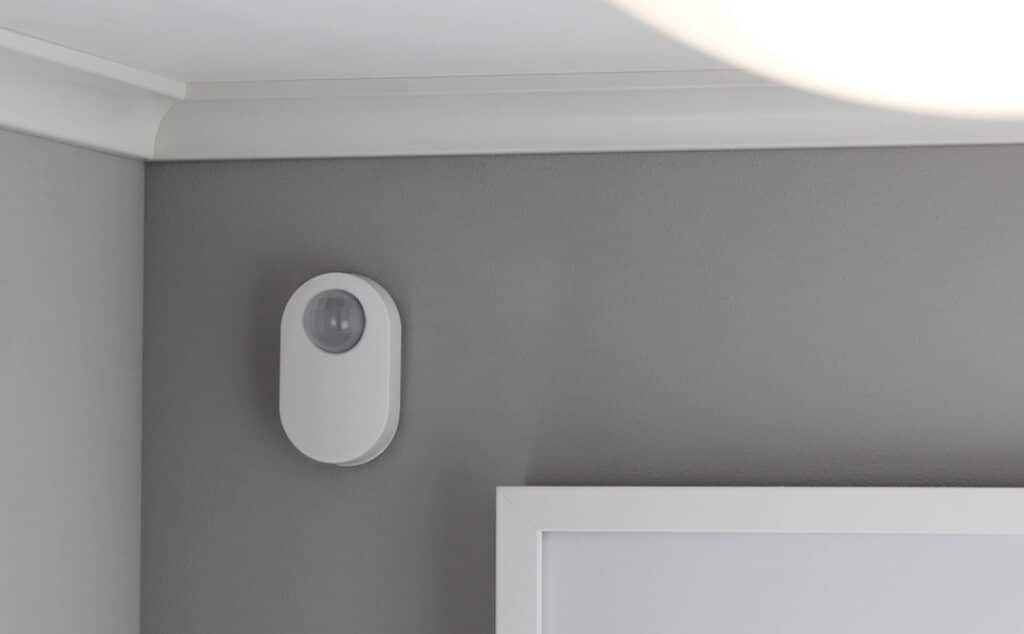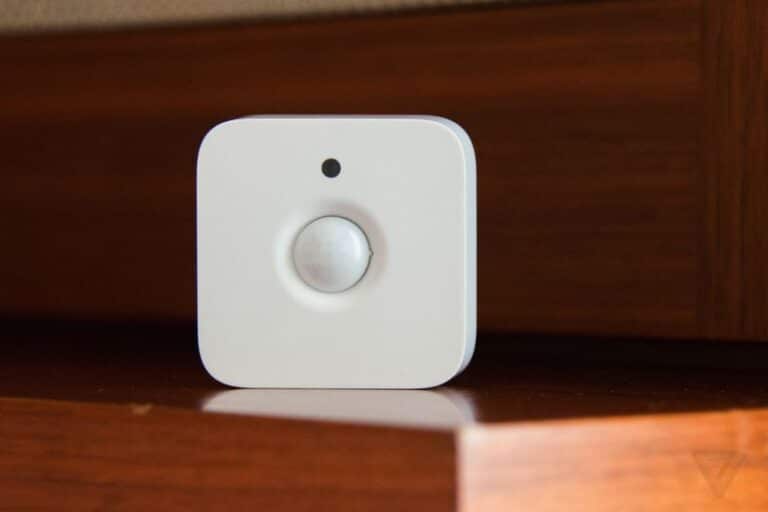Introduction
Can You Put A Motion Sensor Bulb In Any Light: When it comes to home lighting, motion sensor bulbs have become increasingly popular in recent years. These innovative bulbs are designed to automatically turn on when they detect movement in their vicinity, making them a convenient and energy-efficient option for various areas of the home. But can you put a motion sensor bulb in any light fixture? In this article, we will explore the compatibility of motion sensor bulbs with different types of light fixtures.
Firstly, it is important to note that motion sensor bulbs are typically designed to fit standard light sockets, such as the E26 or E27 base. These bases are commonly found in most residential light fixtures, including lamps, ceiling lights, and wall sconces. Therefore, if your light fixture has a standard socket, you should be able to easily install a motion sensor bulb without any issues.
However, there are some light fixtures that may not be compatible with motion sensor bulbs. For example, certain specialty or decorative fixtures may have non-standard sockets or unique designs that prevent the installation of motion sensor bulbs. In these cases, it is recommended to consult the manufacturer or a professional electrician to determine if a motion sensor bulb can be safely installed.
Additionally, it is worth considering the specific requirements and limitations of motion sensor bulbs. Some motion sensor bulbs may have size or weight restrictions, which could affect their compatibility with certain light fixtures. Furthermore, motion sensor bulbs may not be suitable for fixtures that are constantly exposed to extreme temperatures or moisture, as these conditions can interfere with the sensor’s functionality.

Can you turn a regular light into a motion sensor light?
Yes, it is possible to turn a regular light into a motion sensor light. A motion sensor light is a type of lighting fixture that is equipped with a sensor that detects movement and automatically turns on the light when motion is detected. This type of lighting is commonly used for security purposes, as it can help deter potential intruders and provide added safety and convenience.
To turn a regular light into a motion sensor light, you will need to install a motion sensor switch or a motion sensor bulb. A motion sensor switch is a device that replaces the existing light switch and is wired into the electrical system. It typically has a range of settings that allow you to adjust the sensitivity and duration of the motion detection. On the other hand, a motion sensor bulb is a light bulb that has a built-in motion sensor. It can be screwed into any standard light socket and does not require any additional wiring.
When choosing a motion sensor switch or bulb, it is important to consider the specific requirements of your lighting setup. Some motion sensor switches and bulbs are designed for indoor use only, while others are suitable for outdoor applications. Additionally, you may want to consider the range and angle of detection, as well as the type of light output (e.g., LED, incandescent) that best suits your needs.
Once you have selected the appropriate motion sensor switch or bulb, the installation process will vary depending on the specific product. It is recommended to carefully read the manufacturer’s instructions and follow the recommended steps for installation. In most cases, the installation will involve turning off the power, removing the existing light switch or bulb, and connecting the motion sensor switch or bulb according to the provided instructions.
Do motion detector lights need special bulbs?
Yes, motion detector lights do require special bulbs. These bulbs are designed specifically to work with motion sensor technology and provide the best performance and functionality. Regular bulbs may not be compatible with motion detectors and may not work properly or efficiently.
One of the main reasons why motion detector lights need special bulbs is because they need to be able to turn on and off quickly in response to motion. Regular bulbs may have a delay in turning on or off, which can affect the effectiveness of the motion sensor. Special bulbs for motion detector lights are designed to have a fast response time, ensuring that the light turns on or off immediately when motion is detected.
Additionally, special bulbs for motion detector lights are often designed to have a longer lifespan compared to regular bulbs. This is because motion detector lights are typically used in outdoor areas where they may be exposed to harsh weather conditions. Special bulbs are made to be more durable and withstand these conditions, ensuring that the light continues to function properly for a longer period of time.
Furthermore, special bulbs for motion detector lights may also have specific features that enhance their performance. For example, some bulbs may have a wider beam angle to provide better coverage and detection range. Others may have adjustable brightness levels or color temperature options to suit different preferences or requirements.
Motion detector lights do require special bulbs in order to ensure optimal performance, durability, and functionality. These bulbs are designed specifically to work with motion sensor technology and provide fast response times, longer lifespans, and additional features that enhance their performance. It is important to use the recommended special bulbs for motion detector lights to ensure that they work effectively and efficiently.
Will LED lights work with motion sensors?
Yes, LED lights can work with motion sensors. In fact, LED lights are often the preferred choice for use with motion sensors due to their energy efficiency and long lifespan. Motion sensors are devices that detect movement and can be used to automatically turn on lights when someone enters a room or area. By combining LED lights with motion sensors, you can create a more energy-efficient and convenient lighting system.
LED lights are a type of lighting technology that uses light-emitting diodes to produce light. They are known for their energy efficiency, as they consume less electricity compared to traditional incandescent or fluorescent lights. LED lights also have a longer lifespan, which means they require less frequent replacement. These qualities make LED lights an ideal choice for use with motion sensors, as they can help reduce energy consumption and maintenance costs.
When LED lights are used with motion sensors, the sensors detect movement and send a signal to the lights to turn on. This can be particularly useful in areas where lights are not needed all the time, such as hallways, garages, or outdoor spaces. By only turning on the lights when someone is present, you can save energy and reduce electricity bills.
LED lights are compatible with different types of motion sensors, including infrared (IR) sensors and microwave sensors. Infrared sensors detect heat emitted by objects, while microwave sensors emit microwave signals and measure the reflection to detect movement. Both types of sensors can be used with LED lights to create a motion-activated lighting system.
It is important to note that not all LED lights are compatible with motion sensors. Some LED lights may flicker or not work properly when used with certain types of motion sensors. Therefore, it is recommended to choose LED lights that are specifically designed for use with motion sensors or consult the manufacturer for compatibility information.
Can you add a motion sensor to an indoor light?
Yes, it is possible to add a motion sensor to an indoor light. A motion sensor is a device that detects movement and triggers a response, such as turning on a light. By installing a motion sensor, you can automate the lighting in your home and make it more convenient and energy-efficient.
There are several types of motion sensors available in the market, including infrared (IR) sensors, ultrasonic sensors, and microwave sensors. These sensors work by detecting changes in the environment, such as heat, sound, or movement. When a motion is detected, the sensor sends a signal to the light fixture, which then turns on the light.
Adding a motion sensor to an indoor light is a relatively simple process. First, you need to choose the type of motion sensor that best suits your needs. For example, if you want the light to turn on only when someone enters a room, an infrared sensor may be the best option. If you want the light to turn on when there is any movement in the room, an ultrasonic or microwave sensor may be more suitable.
Once you have chosen the motion sensor, you need to install it in the appropriate location. This usually involves mounting the sensor on the wall or ceiling, near the light fixture. You may also need to connect the sensor to the electrical wiring of the light fixture. If you are not familiar with electrical work, it is recommended to hire a professional electrician to install the motion sensor for you.
After the motion sensor is installed, you can adjust its settings to customize its behavior. For example, you can set the sensitivity of the sensor to determine how easily it detects motion. You can also set the duration for which the light stays on after motion is detected. These settings can be adjusted using the controls on the motion sensor or through a smartphone app, if the sensor is compatible with smart home technology.
How do you install a light sensor on an existing light?
Installing a light sensor on an existing light can be a simple and cost-effective way to automate your lighting system. Whether you want to save energy, enhance security, or simply add convenience to your home or office, a light sensor can be a valuable addition. In this article, we will discuss the steps involved in installing a light sensor on an existing light.
Step 1: Choose the right light sensor
The first step in installing a light sensor is to choose the right one for your needs. There are various types of light sensors available in the market, including motion sensors, photocells, and occupancy sensors. Consider factors such as the location of the light, the desired functionality, and your budget when selecting a light sensor.
Step 2: Turn off the power
Before you begin the installation process, it is crucial to turn off the power to the light fixture. This will ensure your safety and prevent any electrical accidents. Locate the circuit breaker or fuse box and switch off the power supply to the specific light you are working on.
Step 3: Remove the existing light switch
Next, you will need to remove the existing light switch from the wall. Use a screwdriver to unscrew the mounting screws and gently pull the switch away from the wall. Take note of the wiring connections and make sure to label them for easy reconnection later.
Step 4: Install the light sensor
Now it’s time to install the light sensor. Begin by connecting the wires from the light sensor to the corresponding wires in the wall box. Most light sensors come with detailed instructions on how to make these connections. Once the wiring is complete, carefully tuck the wires back into the wall box and secure the light sensor in place using the provided screws.
When installing a motion sensor bulb in a light fixture, there are a few compatibility requirements to consider. Firstly, it is important to ensure that the motion sensor bulb is compatible with the type of light fixture you have. Some motion sensor bulbs may only be suitable for specific types of fixtures, such as standard screw-in or bayonet fittings. Therefore, it is crucial to check the packaging or product specifications to ensure compatibility.
Additionally, it is important to consider the voltage requirements of the motion sensor bulb. Most motion sensor bulbs are designed to work with standard household voltages, typically 120 volts. However, there are also motion sensor bulbs available for lower voltage systems, such as 12 volts. It is essential to match the voltage requirements of the bulb with the voltage of your light fixture to ensure proper functioning and avoid any potential damage.
In summary, the compatibility requirements for installing a motion sensor bulb in a light fixture include checking the compatibility with the type of fixture and ensuring the voltage requirements match. By considering these factors, you can ensure a successful installation and optimal performance of your motion sensor bulb.
Are there any specific types of light fixtures that are not suitable for a motion sensor bulb?
Yes, there are certain types of light fixtures that may not be suitable for a motion sensor bulb. One example is a light fixture with a dimmer switch. Motion sensor bulbs are designed to turn on and off automatically based on movement, and they may not function properly with a dimmer switch. The dimmer switch may interfere with the motion sensor’s ability to detect movement, resulting in unreliable performance.
Another type of light fixture that may not be suitable for a motion sensor bulb is a fixture with multiple bulbs controlled by a single switch. In this case, the motion sensor bulb may only control one of the bulbs, while the others remain unaffected. This can lead to inconsistent lighting and may not provide the desired level of convenience or energy efficiency.
Can a motion sensor bulb be easily installed by a non-professional or does it require professional assistance?
Installing a motion sensor bulb can typically be done by a non-professional without the need for professional assistance. These bulbs are designed to be user-friendly and can be easily installed in most standard light fixtures. However, it is important to note that the specific installation process may vary depending on the brand and model of the motion sensor bulb, so it is always recommended to refer to the manufacturer’s instructions for guidance.
Before installing a motion sensor bulb, it is important to ensure that the light fixture is compatible with this type of bulb. Most motion sensor bulbs are designed to fit into standard light fixtures, but there may be certain types of fixtures that are not suitable. It is always a good idea to check the compatibility requirements of the motion sensor bulb and compare them to the specifications of the light fixture before installation.
When installing a motion sensor bulb, it is important to follow the proper safety precautions. This includes turning off the power to the light fixture at the circuit breaker before beginning the installation process. It is also recommended to wear protective gloves and eyewear to prevent any potential injuries.
Are there any additional considerations or modifications needed when installing a motion sensor bulb in an existing light fixture?
When installing a motion sensor bulb in an existing light fixture, there are a few additional considerations and modifications that may be needed. Firstly, it is important to ensure that the existing light fixture is compatible with a motion sensor bulb. Some older fixtures may not have the necessary wiring or components to support a motion sensor bulb, so it is important to check the specifications of the fixture before installation.
Additionally, depending on the specific motion sensor bulb being used, there may be a need for additional modifications to the fixture. This could include installing a separate motion sensor switch or adjusting the wiring to accommodate the motion sensor functionality. It is recommended to consult the manufacturer’s instructions or seek professional assistance if any modifications are required.

Conclusion
One of the main advantages of motion sensor bulbs is their ability to automatically turn on and off based on movement. This not only saves energy but also enhances security by deterring potential intruders. Additionally, motion sensor bulbs can be programmed to adjust their sensitivity and duration of illumination, allowing for customization based on individual needs and preferences.
Another benefit of motion sensor bulbs is their versatility. They can be used in various settings, including indoor and outdoor spaces. Whether it is a hallway, staircase, garage, or porch, motion sensor bulbs can provide the right amount of light when needed, without the need for manual operation. This is particularly useful in areas where it may be difficult to reach a light switch or where hands-free operation is desired.
Furthermore, motion detector bulbs are compatible with different types of light fixtures. They can be easily screwed into standard sockets, making them a convenient and cost-effective solution for upgrading existing lighting systems. Whether it is a table lamp, ceiling fixture, or wall sconce, motion sensor bulbs can seamlessly integrate into any space without the need for extensive modifications.
Motion sensor bulbs offer a practical and efficient way to enhance our lighting systems. With their ability to automatically detect movement and adjust illumination accordingly, they provide convenience, energy savings, and improved security. Whether it is for residential or commercial use, motion sensor bulbs can be easily installed in any light fixture, making them a versatile and valuable addition to our homes and businesses.

